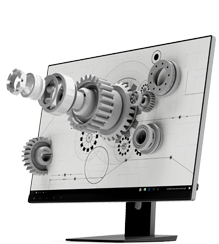What is LCD screen reinforcement technology?

Under harsh outdoor conditions such as temperature, humidity, vibration, impact, electromagnetic interference, etc , it can have adverse effects on the internal structure and backlight of LCD screens,
Under harsh outdoor conditions such as temperature, humidity, vibration, impact, electromagnetic interference, etc., it can have adverse effects on the internal structure and backlight of LCD screens, affecting the stability of image display and the service life of LCD screens. Therefore, it is necessary to adopt LCD screen reinforcement technology to adapt to harsh application scenarios.
LCD screens are now widely used, especially in industrial and outdoor settings. On the other hand, under harsh outdoor conditions such as temperature, humidity, vibration, impact, electromagnetic interference, etc., it can have adverse effects on the internal structure and backlight of LCD screens, affecting the stability of image display and the service life of LCD screens. Therefore, it is necessary to adopt LCD screen reinforcement technology to adapt to harsh application scenarios. The reinforcement technology of LCD screens refers to the reinforcement measures taken on the mechanical, electrical, and system structures of the LCD screen to ensure stable operation in harsh environments, thereby achieving stable display.
Below, we will provide a detailed introduction to several aspects involved in LCD screen reinforcement technology, as well as corresponding technical measures.
1、 Temperature influence
The working temperature of general industrial LCD screens is within the range of -20 to 70 ℃. Excessive or insufficient temperature can have an impact on the liquid crystal material and backlight of the LCD screen. Liquid crystal materials are highly sensitive to temperature, which affects the response speed of LCD screens. The optimal working temperature for backlight is around 50 ℃. If the working environment temperature is below 0 ℃, it will affect the service life of the backlight and also affect its brightness.
Technical measures: In low temperature conditions, the main approach is to adopt the thermal design of LCD screens. There are two main ideas. Firstly, the use of wide temperature LCD screen technology has achieved ideal results, but at the same time, the cost is relatively high. Next is the ITO film heating glass technology, which refers to adding an ITO film glass on the outer layer of the LCD module. When the ITO film is energized, it generates heat, thereby heating up the entire LCD module. In high temperature situations, heat dissipation technology is mainly used. The main heat sources for LCD screens are the power supply and backlight. Through technologies such as heat dissipation fins and liquid cooling, LCD screens can be effectively cooled and cooled.
2、 Vibration and impact effects
In some harsh working environments, LCD screens are susceptible to various vibrations and impacts. For example, sustained resonance at the same frequency and unexpected impact forces can damage the overall shape of the LCD module. Through analysis, it can be known that the weak link of LCD liquid crystal modules is mainly in the liquid crystal layer, which is relatively thin and easy to bend. Next is the backlight source, which can easily form a light bulb and cause filament breakage under resonance. Some connecting wires of electrical components and flexible circuit boards are prone to loosening or breaking under resonance or impact.
Technical measures: Firstly, use a stronger screen casing to enhance the overall structural strength. Secondly, the glass cover at the front of the screen is also very important. Using tempered glass cover can effectively improve the stability of the LCD module. In terms of backlighting, a bracket can be added to the casing to better secure the lamp tube. For electrical components and some cables, silicone rubber sealing can be used to strengthen fixation when necessary.

3、 Influence of humidity and dust
LCD screens are display devices with low voltage, low power consumption, and high resistance. In humid environments, if the LCD module is flooded, fogged, water vapor, dust invades, etc., it will seriously affect the display effect and service life of the screen. If the water vapor is severe, it can cause screen corrosion. Dust entering not only affects the display, but also may block the heat dissipation holes, affecting screen heat dissipation, etc.
Technical measures: Adopting LCD screen sealing design, reinforcing the welding structure of the LCD screen shell, and embedding rubber strips under the glass cover plate can effectively seal and prevent the invasion of water vapor and dust.
4、 Electromagnetic interference impact
In industrial and outdoor environments, electromagnetic interference is strong, and LCD screens need to have a certain degree of resistance to electromagnetic interference in order to transmit images continuously and stably.
Technical measures: The LCD screen adopts EMI anti electromagnetic interference design, using shielded cables, filters, magnetic rings, shielded rubber strips, metal mesh and other components to reduce the impact of electromagnetic interference on the display performance of the LCD screen.
The above is an analysis and introduction of LCD screen reinforcement technology, among which temperature influence is relatively the most important factor. How to make the screen display normally and maintain the best display effect in extremely harsh temperature environments is the key core of LCD screen reinforcement technology.
AUO display:https://www.idtdisplay.com/products/auo-lcd-modules/










